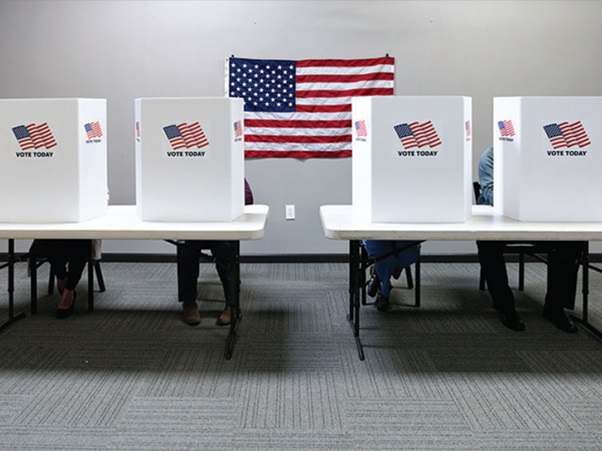Featured Research

"Private Selves as Public Property: Black Women’s Self-Making in the Contemporary Moment" Jenn Jackson shows how Black women have resisted the fungibility of their bodies through processes of self-formation and self-reclamation and how that resistance might help us understand Black women’s social and political life worlds today.
Public Culture, 2020
"To Appeal and Amend: Changes to Recently Updated Flood Insurance Rate Maps" In this article, Sarah Pralle, associate professor of political science, and her co-author examine whether there are discernible trends or patterns in alterations to Flood Insurance Rate Maps.
Risk, Hazards & Crisis in Public Policy, 2021
Building Robust and Ethical Vaccination Verification Systems
Johannes Himmelreich and his co-authors propose guidelines for deploying vaccine record verification (V.R.V.) systems that align with vaccine prioritization decisions; uphold fairness and equity; and are built on trustworthy technology.
The Brookings Institution, 2021
O’Keefe Talks to TheStreet and TIME About the Space Around Earth, Returning to the Moon
April 10, 2024
TheStreet,TIME,WAER
Nearly 17,000 satellites have been launched into orbit since the 1950s, according to the European Space Agency. Close to 12,000 of those remain in orbit today, though only 9,000 are active. Additionally, space surveillance networks are tracking more than 35,000 pieces of space debris in orbit around the planet. In total, there are more than 11,000 tons of mass orbiting Earth.
Sean O'Keefe, University Professor and former NASA administrator, tells TheStreet that the ever-increasing crowds of junk orbiting the planet is an "accident waiting to happen."
"It's the equivalency of looking at traffic jams on the interstate highways," O'Keefe says, adding that the difference is that in orbit, spacecraft lack the option of braking and laying on the horn. "Everything's still traveling at 17,500 miles an hour I
In the TIME article, "Why China Might Beat the U.S. Back to the Moon," O'Keefe says, "There’s no question that the technology they have is verging very close to being competitive with us. Two years ago, I would not have said that, but they are really improving to the point that [the 2030] objective is conceivable."
O'Keefe was also quoted in the WAER article, "Determination and patience reward CNY's women astronauts."
Related News
Commentary

Aug 1, 2024
Commentary

Jul 31, 2024
Commentary

Jul 30, 2024
Lecture Series
Campbell's lecture series bring together people with a diverse range of perspectives and interests to open dialogue, foster understanding and give the power of knowledge.
Bantle Symposium on Business and Government Policy
Phanstiel Lecture Series on Leadership
State of Democracy Lecture Series
Tanner Lecture Series on Ethics, Citizenship and Public Responsibility


Campbell Conversation Spotlight
You probably know the name James Garfield, but how much else do you know about him, and why might he and his political times be relevant to considering today’s political landscape? Host Grant Reeher interviews C. W. Goodyear, a historian who has written a new definitive biography of him. His book is titled President Garfield: From Radical to Unifier.
December 9, 2023
Interested in partnering with us?
O’Keefe Talks to TheStreet and TIME About the Space Around Earth, Returning to the Moon
April 10, 2024
TheStreet,TIME,WAER
Nearly 17,000 satellites have been launched into orbit since the 1950s, according to the European Space Agency. Close to 12,000 of those remain in orbit today, though only 9,000 are active. Additionally, space surveillance networks are tracking more than 35,000 pieces of space debris in orbit around the planet. In total, there are more than 11,000 tons of mass orbiting Earth.
Sean O'Keefe, University Professor and former NASA administrator, tells TheStreet that the ever-increasing crowds of junk orbiting the planet is an "accident waiting to happen."
"It's the equivalency of looking at traffic jams on the interstate highways," O'Keefe says, adding that the difference is that in orbit, spacecraft lack the option of braking and laying on the horn. "Everything's still traveling at 17,500 miles an hour I
In the TIME article, "Why China Might Beat the U.S. Back to the Moon," O'Keefe says, "There’s no question that the technology they have is verging very close to being competitive with us. Two years ago, I would not have said that, but they are really improving to the point that [the 2030] objective is conceivable."
O'Keefe was also quoted in the WAER article, "Determination and patience reward CNY's women astronauts."
Related News
Commentary

Aug 1, 2024
Commentary

Jul 31, 2024
Commentary

Jul 30, 2024





